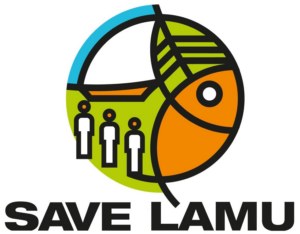In response to a notice by NEMA in the Daily Nation dated 19th March, 2013 that informs the public of the opportunity to submit comments on an ESIA report of the ESIA Study Report of the Construction of the First Three Berths of the Proposed Lamu Port and Associated Infrastructure in Manda Bay, Lamu County, Kenya, Save have submitted a comment to NEMA that summarizes all issues of concern, which can be found here.
Having read the ESIA report, it is clear that significant irreversible environmental and social impacts will be expected. Unfortunately, no alternatives outside of a 50km from the site are proposed. Instead only sites in Manda Island and Lamu Island, which both fall inside the UNESCO World Heritage Site are considered. Considering that the ecology in Lamu is widely recognized as one of the richest along the entire coast of East Africa and its ecosystems have worldwide recognition. It’s preservation and protection is therefore not only of national significance but are important internationally, and as such alternatives must be considered using thorough evidence and expertise.
Unfortunately, the methodology is highly lacking where the Researchers themselves acknowledge that the study was carried in great haste, where numerous steps were overlooked during the obtaining of baseline information on the environmental status of the region. The report states that some marine surveys were not undertaken due to financial constraints of the Ministry of Transport. Only cross-sectional observation techniques were used to assess bird life, and only the impacts on the immediate vicinity around the port site were assessed.
Furthermore only questionnaires, key-informant interviews, focus group discussions, and direct observation were utilized, thereby not having the three public meetings required by Section 17 of the Environmental (Impact Assessment and Audit) Regulations, 2003. Considering that the ESIA is available only in English, a majority of the affected communities cannot review the said document.
Despite these gaps, the report stipulates significant impacts including:
1. The loss of fishing grounds and landing sites
2. The closure of “Mkanda” (channel) during port operation which is the only route utilized by fishermen, traders, school children, tourists and the community traveling from Lamu East and to Lamu town
4. Agricultural land and land owners have already been displaced in Kililana and will continue to be displaced
5. Coral reef of Iweni Conservation area will be completely lost due to the adverse effects caused by dredging.
7. Overpopulation and expected influx of migrants into Lamu County which will lead to pollution, displacement, increase crime and drug abuse.
8. The report admits that the lifestyle of the minority communities, including the hunter-gatherer Boni community will be disrupted and threatened by increase land speculation; and
9. Unresolved land issues and skewed allocations of title deeds.
While the EIA openly describes disastrous negative impacts, it fails to provide meaningful resolution to the issues raised thereby leading us to speculate on the ecological and social soundness of the project. On analysis of the above concerns, Save Lamu firmly believes that the Lamu Port will have significant and irreparable damage to the people of Lamu and their environment if implemented as is, and hereby request you to write to NEMA to refuse the issuance of an environmental impact assessment licence under the Act and advise the proponent to provide comprehensive and independent analysis of alternate sites proposed outside of those indicated in the report and their expected impacts through a strategic environmental assessment. To support this, a petition site was formed for members of the public to write letters to NEMA in response.


Having read this I thought it was extremely enlightening. I appreciate you taking the time and effort to put this information together. I once again find myself spending a significant amount of time both reading and commenting. But so what, it was still worthwhile!|
Hey there, You have done a great job. I will definitely digg it and personally suggest to my friends.
I am sure they will be benefited from this website.
https://gumroad.com/mbaessaywritingservi/p/5-simple-steps-for-getting-a-analysis-paper-on-line
phd disserttation writers
P (Cinda) https://gumroad.com/mbaessaywritingservi/p/5-simple-steps-for-getting-a-analysis-paper-on-line
Heyy there, You have done a great job. I will definitely digg it and personally suggest to
my friends. I am sure they will be benefited from this website.
https://gumroad.com/mbaessaywritingservi/p/5-simple-steps-for-getting-a-analysis-paper-on-line
phd dissertation writers
P (Cinda) https://gumroad.com/mbaessaywritingservi/p/5-simple-steps-for-getting-a-analysis-paper-on-line
I am so grateful for your post.Really thank you! Fantastic.
Right hwre is the perfect website for anyone who hopes to understabd this topic.
You realize so much its almost hard to argue with you (not that I actually would want to…HaHa).
You definitely put a brand new spin on a subject which has been discussed for many years.
Excelent stuff, just excellent!
http://images.google.com/url?q=https://comprarcialis5mg.org/it/comprare-spedra-avanafil-senza-ricetta-online/
Simone [Simone] http://images.google.ba/url?q=https://comprarcialis5mg.org/it/comprare-spedra-avanafil-senza-ricetta-online/
Right here is the perfect website for anyone
who hopes too understand this topic. You realize sso
much its almost hard to argue with you (not that I actually would want to…HaHa).
You efinitely put a brand new spin on a subject which has been discussed for many years.
Excellent stuff, jst excellent!
http://images.google.com/url?q=https://comprarcialis5mg.org/it/comprare-spedra-avanafil-senza-ricetta-online/
Simone [Simone] http://images.google.com/url?q=https://comprarcialis5mg.org/it/comprare-spedra-avanafil-senza-ricetta-online/
There is a special label under the upper, which makes the overall look very cute and interesting.
Looking forward to reading more. Great blog post.Thanks Again. Much obliged.